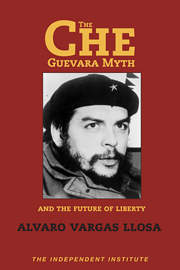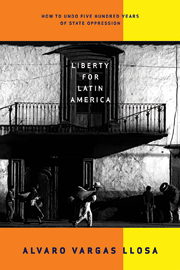Now that the Bush administration is proposing to partially privatize Social Security, it would do well to heed the lessons of one decade of pension reform in Latin America. And they are simple: the more ownership and choice there are, the better.
It is a mistake to set out “to save Social Security” because the essence of the matter is not financial (i.e. a diminishing ratio of contributors to pensioners). If you want large numbers of people opting out of the current system, high rates of return for personal accounts and a boost to domestic savings, it is crucial to envisage reform as a devolution of power to the people.
There are five ways in which partial privatization can end up tying, rather than freeing, people’s hands: perpetuating the old system alongside the new; establishing a mixed system in which the personal account is a supplement to the basic government pension; having the government collect the workers’ contributions to the private system; taxing contributions, and placing conditions on private pension funds.
By maintaining the old system, the government competes in unfair ways with the new system. By establishing a mixed formula, the poor subsidize the rich and, since part of the bill for the universal state pension will be footed by small companies and independent workers, bureaucrats prevent the liberation of substantial capital. By collecting the private contributions, the government blurs the difference between the two systems. By taxing private contributions, the government discourages participation. Finally, by putting a straitjacket on private pension funds in a context of mandatory savings, the government creates an oligopoly and forces people to pay high administrative costs.
In countries such as Argentina, Colombia or Uruguay, that adopted all or some of these forms of government intervention, reform went least well. In Chile and El Salvador where the government meddled less, things went much better. Among those situated halfway, the ones closer to the first group, such as Bolivia, did better than other countries, such as Peru, until new reforms had to be introduced. In all cases, partial privatization obtained better results than the old pay-as-you-go system.
Colombia is a good example of the first type of flaw. New entrants into the private system can go back to the old system, which the government continues to publicize just as it taxes personal accounts. Not surprisingly, the old system has twice as many workers as the new. Argentina is a perfect example of the second flaw. The universal pay-as-you-go principle continues to operate even as workers are allowed to opt for private accounts, so employers pay 16 percent of a worker’s salary to the government and non-salaried workers pay the full 27 percent. Many people, therefore, are kept out of the system (only 8 million people participate in both systems combined).
In Argentina, Mexico and Bolivia, the government collects the private contributions: the third flaw. This explains in part why in Bolivia many people stay out of the formal system.
Peru, a good example of the fourth flaw, taxed contributions to private accounts until it was forced, in 1995, to do away with this absurdity when only half of those expected to opt for them had done so.
The fifth flaw is present in all countries, where pension funds are highly regulated. The worst imposition is the obligation to buy government bonds. Argentina’s pensioners suffered the consequences when the government defaulted on its debt at the end of 2001. Mexicans were for years forced to accept a much lower rate of return than Chileans (10 percent real return) or Salvadorians (12 percent real return) because 64 percent of pensions had to by law be invested in government debt.
Through restrictions that bar many types of corporations, impose minimum profitability rules, prohibit pension funds to offer more than one type of investment, and limit investments abroad, Latin American governments have driven up administrative costs to between 20 percent and 30 percent of total assets, causing furor. Since these rules ensure similar results, the various pension funds have devoted excessive time and money to marketing campaigns.
Chile relaxed some rules, bringing costs down to 18 percent. The power of ownership and choice is such that even in those countries where state intervention has limited the benefits, no government has reversed the reforms. Anyone who attempted to do so would be up against 13 million Mexicans who own some $35 billion in private pension assets or 3.3 million Peruvians who own over $6 billion. The irony is that many governments have sustained themselves by drawing on that pool of capital through the sale of bonds!
But, by creating a system that is mandatory rather than voluntary and places barriers to competition, the benefits, though significant, have been less wonderful than they could have been – the reason why many countries have reformed their own reforms.
This is a lesson the United States would do well to heed: placing limits on property and choice means that sooner or later you will change the rules again. The bolder reform is, the greater the results.












